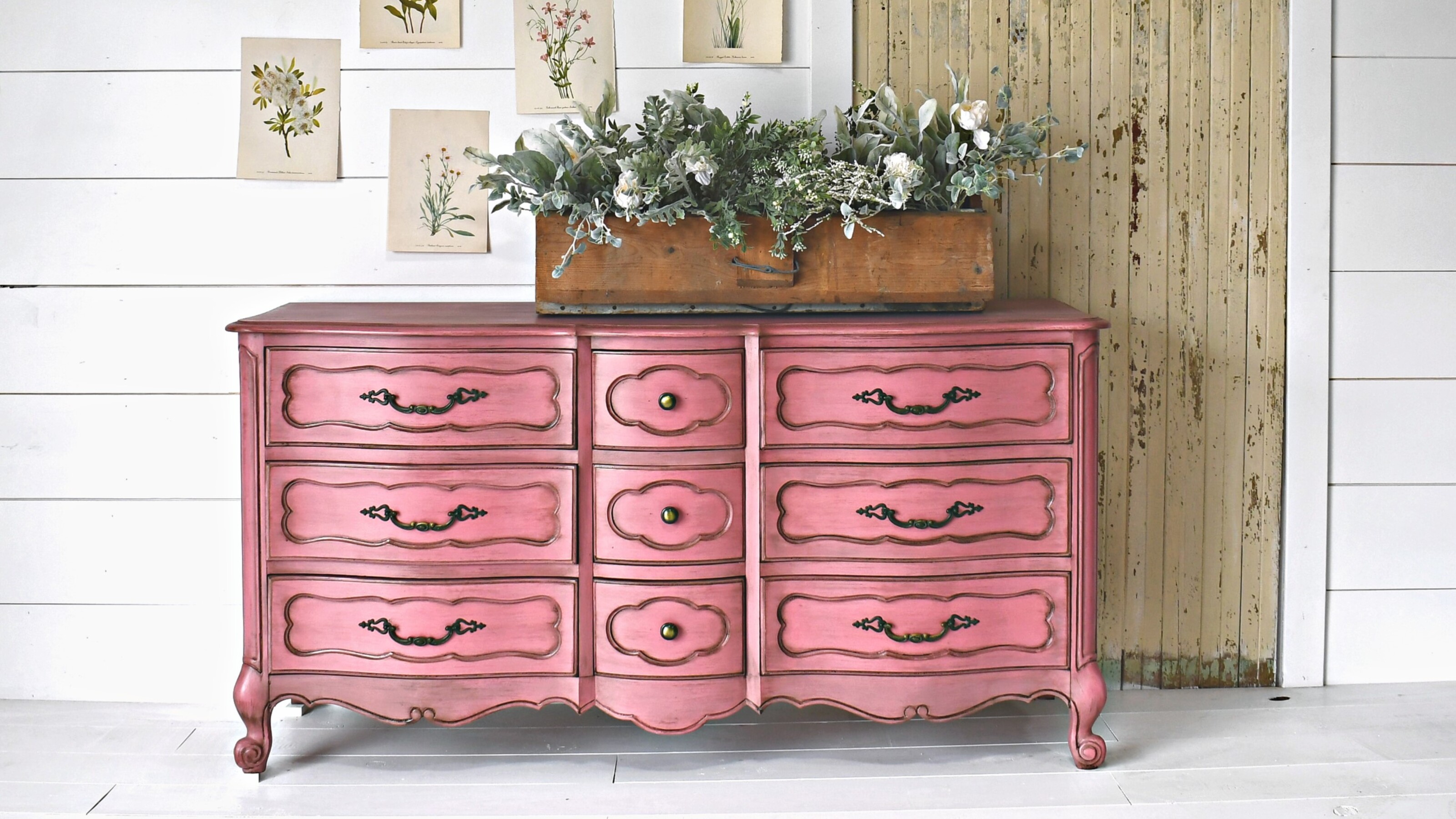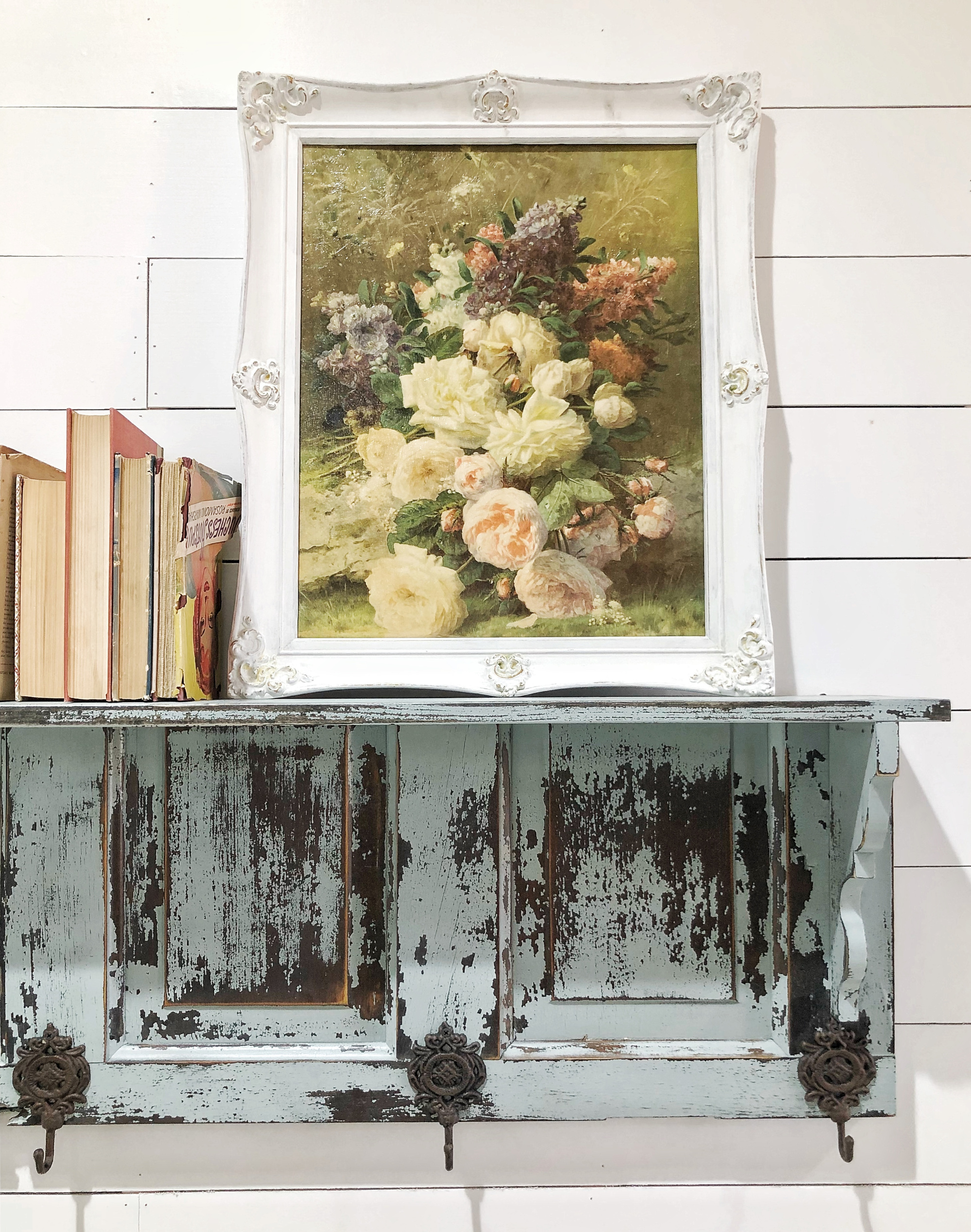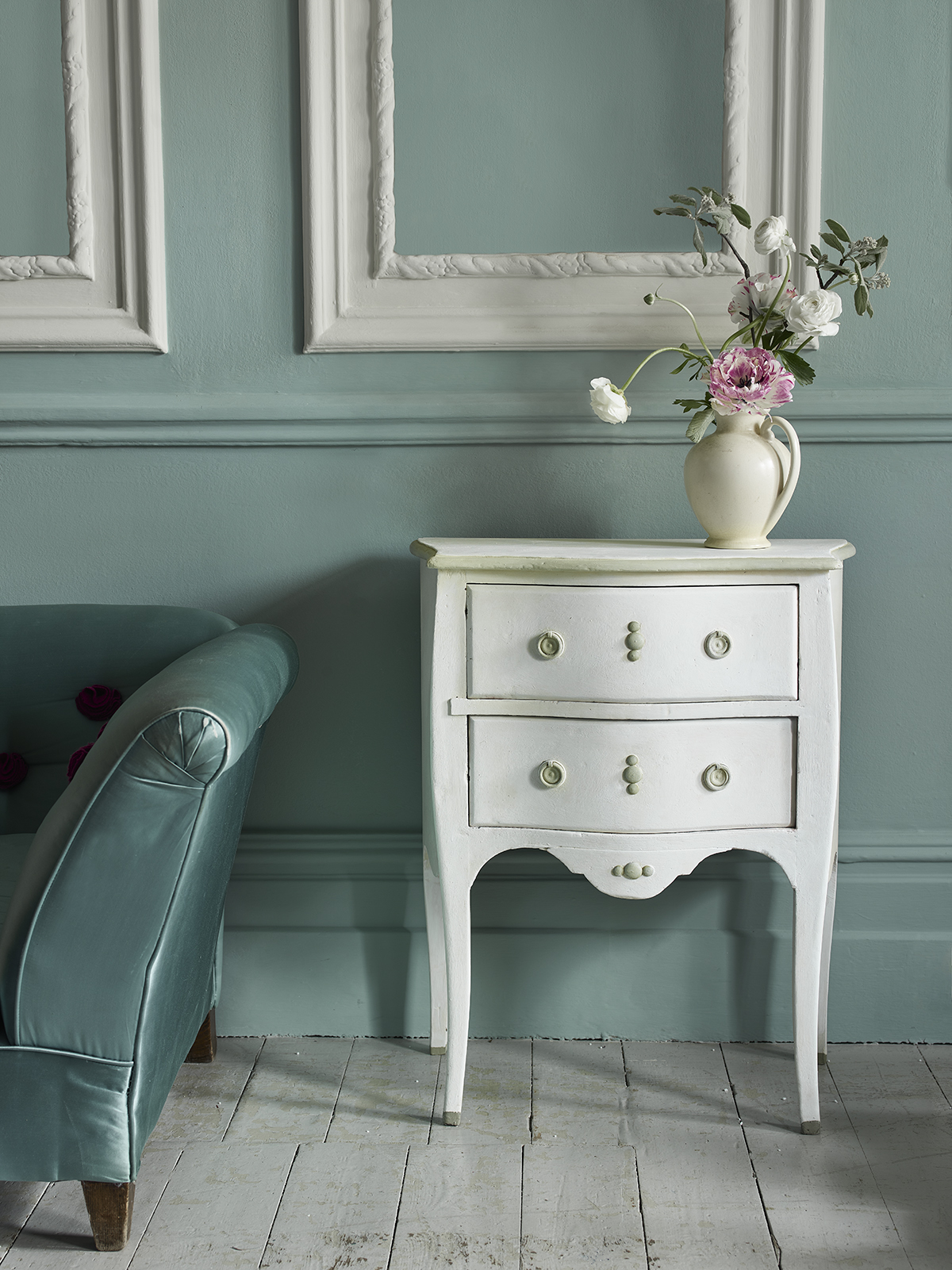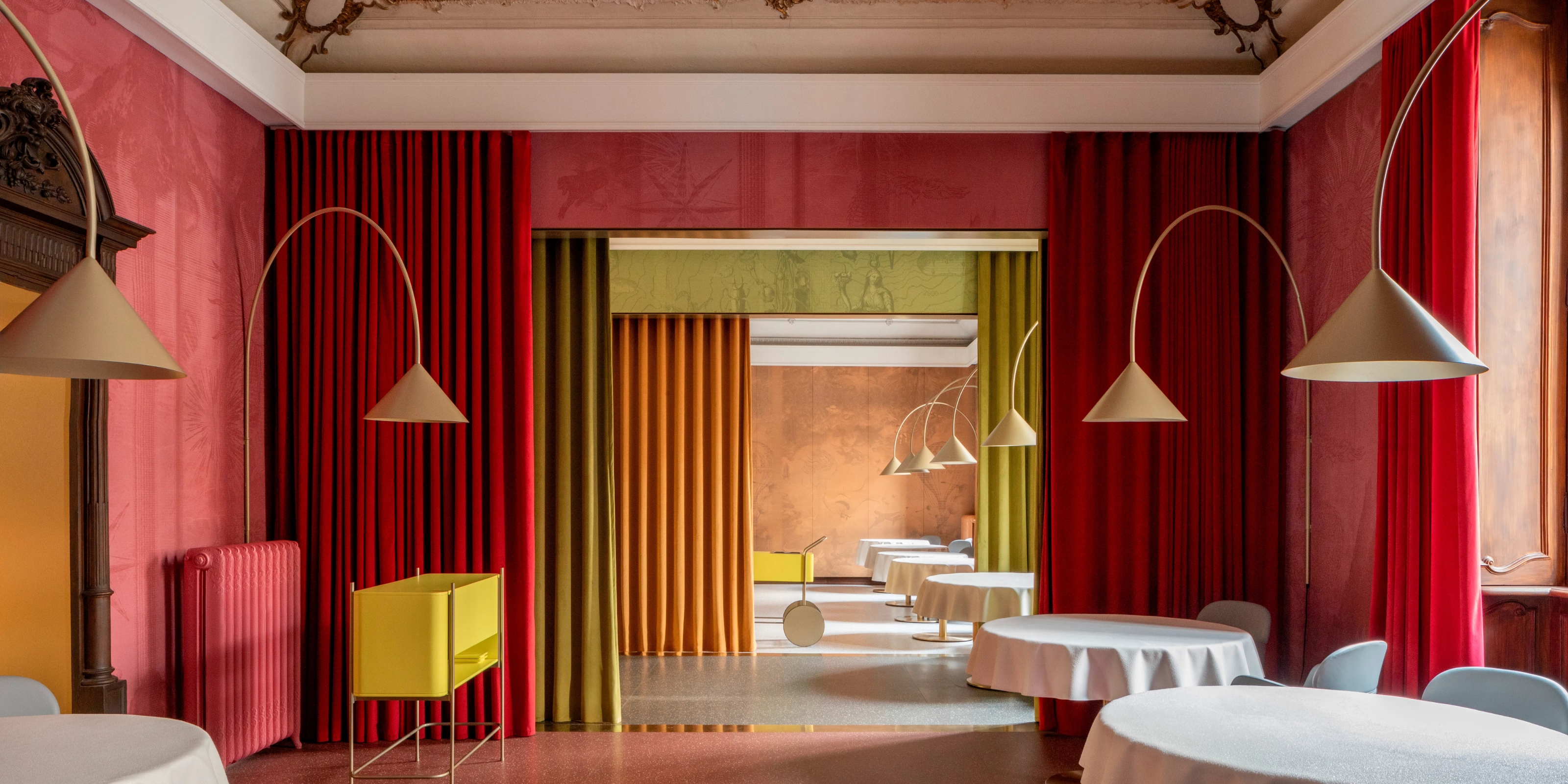What is milk paint? And here's why you'll love this new decorating trend
We get to grips with what milk paint is, look at its benefits and learn of its many uses


What is milk paint? This intriguingly named paint, sometimes called casein paint, has been around for thousands of years. And something that was once used to decorate cave walls still has a place in our homes today.
Milk paint is a paint finish that's particularly loved by DIY enthusiasts, for creating a stylish yet distressed look on pieces of furniture, walls, doors and more. And not only does milk paint have ancient origins, it has environmentally-friendly properties, and is super simple to make at home.
How do you go about using it? How can you apply it? What are the benefits? We delve deep to find out more about this type of paint.
What is milk paint?
Milk paint is a type of paint containing milk protein, or casein, lime and natural earth pigments like ochre, umber and iron oxide. As we already mentioned, the formula has actually been around for a while...
'It's probably the earliest form of paint available,' says Carolyn Moore, owner of Old Fashioned Milk Paint UK. 'It was heavily used by settlers in North America, and has come to epitomize the character and style of early American and Colonial architecture and interiors.'
Milk paint takes the form of powder when it arrives, meaning you avoid lugging those great cans of paint into your home. You mix the formula with water, also meaning you have total control of how much or how little you'd like to make.
In powder form, it will also last indefinitely, but the milk component means that once mixed with water it will only last for about 24-48 hours if refrigerated.
'So beware of liquid products claiming to be milk paint – if it’s not a powder, it’s not true milk paint as it will contain some form of preservative!'
When applied, the effect of milk paint is a beautiful matt and velvety finish that creates a real vintage feel. It gives a period look to new or old and upcycled pieces and is increasingly used in painting furniture for an authentic, aged feel.
'Nothing else quite matches the look and feel of genuine milk pain,' says Carolyn.
Is milk paint good for the environment?
Milk paint has been around for centuries, but only resurfaced around 50 years ago, when Charles Thibeau began researching milk paint recipes to recreate the finish he found on early American furniture. He found a way to produce it in dry, powdered form so it could be stored long-term without the addition of chemicals.
Milk paint just contains just the traditional, natural ingredients of dried milk protein, lime, clay and natural pigments. There are no chemicals, preservatives, fungicides, hydrocarbons or any other petroleum derivatives, which means it is completely safe to use even for the chemically sensitive.
It can be safely disposed of in wet or dry form, and given that it is sold in powder form - you only need to mix it with water to create the liquid paint and doesn't involve too much packaging.
But while it's an amazing sustainable material, it goes without saying that milk paint isn't vegan-friendly.
What are the other benefits of using milk paint?

There are a lot of benefits when using milk paint, especially when you're aiming for this specific look when decorating. Its eco-credentials are hard to beat, but alongside that, it is safe for pets, and children, low in odor and fast drying.
There is also the impact and finish it creates on your chosen piece of furniture. 'There is a sheer durability, its beautiful pigment-rich colors and uniquely soft finish,' says Carolyn.
It is also very versatile and will create any type of finish you are looking for. You can use it to give pristine full coverage, making it thick when you create the paint, or you can let it naturally chip and flake, or you can hand-distress with a thinner, more watery paint creation. Whatever effect you want to create, milk paint is ideal for all manner of paint effects.
How do you use milk paint?
When using milk paint in the home, firstly think about what kind of finish you want - do you want a porous look, to give a piece of furniture some period charm, or do you want total coverage? This will determine what ratio of milk paint powder to water you go for.
Equal quantities of powder and water are required for normal furniture painting, so the easiest method is to measure out the powder and water by volume. Whatever you are using to measure the powder into the mixing bowl or container, use the same to measure in the water. 'We recommend mixing milk paint at a ratio of one part powder to one part water because it makes the mix roughly as thick as pancake batter for even application,' says a spokesperson for Real Milk Paint.
Lukewarm water is best for dissolving the powder. If you are mixing a small amount of powder, it doesn't matter whether you start with the water or the powder. Mix thoroughly until dissolved and allow to stand for 10 minutes to thicken up. 'Bear in mind that it is thinner than other paints,' warns Carolyn, so don't worry if it doesn't look like the type of paint substance you recognize.
Milk paint is very forgiving and if you do make it too thick or thin you can easily adjust by adding paint powder or water, the color won't change. After a couple of uses, you will find you can mix by eye.
'Apply as you would any other paint,' says Carolyn. 'You don't need a special brush, however synthetic is better as it will hold more and absorb less of the paint. Your first coat won't look great; it will be streaky but don't worry, keep going. The Magic happens after that second coat!'
How to protect milk paint furniture
The color of your milk painted furniture will never fade, but it is recommended to protect milk paint from everyday oils and dirt which will easily stain it. The product you use will depend on the effect you wish to achieve and where the item is to be used.
If you want protection on furniture without any sheen or color change, use a matt acrylic varnish, which is milky at first but dries completely clear. Waxes or oils will provide a lustre or sheen, but may darken the whites and lighter colors slightly.
What is the difference between milk paint and chalk paint?

Chalk paint is a medium created by Annie Sloan. 'It is my decorative furniture paint that I created in an effort to find a paint that would do it all,' explains Annie.
'With Chalk Paint, the number one most important element is the pigments. As a fine artist, I know that nothing is as important as depth and richness of color and you simply cannot create the kind of luxurious, rich colors I’m known for producing without using premium quality pigments.'
Chalk Paint, like milk paint is water-based, meaning that they are both environmentally friendly options, and both create the interesting textures that both paints are known for.
Chalk paint was developed especially for painting furniture, similar to milk paint. It can be used to create decorative effects. Chalk paint will apply to almost any surface without the need to prep or prime and also gives a timeless finish.
Where the paints differ starts with the fact that chalk paint is not natural, whereas milk paint is made from casein, limestone and natural fillers and has ancient origins.
Another difference is that milk paint arrives in powder form, so you mix up only what you need there and then. Chalk paint comes premixed.
Both milk paint and chalk paint do a great job in bringing that farmhouse style, but if you want to distress your home project, milk paint surfaces offer the distressed look quicker while chalk paint offers a smoother finish that doesn't highlight brushstrokes as much.
Where to use milk paint
Milk paint is often used to transform a piece of furniture and give it that vintage look, and is appropriate for every room in the home. 'You can absolutely use milk painted furniture in any room, just make sure the sealer used is appropriate for its use and environment,' says Carolyn.
'For example, a side table in a living room may expect light use, so would be fine with any form wax, oil or varnish. However, if used on a bathroom cabinet or kitchen doors, you would need to tough, water repellent sealer suitable for high moisture areas.'
Milk paint can also be used on walls, and in particular, milk paint provides an authentic period finish on lime plaster.
Be The First To Know
The Livingetc newsletters are your inside source for what’s shaping interiors now - and what’s next. Discover trend forecasts, smart style ideas, and curated shopping inspiration that brings design to life. Subscribe today and stay ahead of the curve.

Former content editor at Livingetc.com, Oonagh is an expert at spotting the interior trends that are making waves in the design world. She has written a mix of everything from home tours to news, long-form features to design idea pieces, as well as having frequently been featured in the monthly print magazine. She is the go-to for design advice in the home. Previously, she worked on a London property title, producing long-read interiors features, style pages and conducting interviews with a range of famous faces from the UK interiors scene, from Kit Kemp to Robert Kime. In doing so, she has developed a keen interest in London's historical architecture and the city's distinct tastemakers paving the way in the world of interiors.
-
 Biophilic Decluttering — What to Take Out of Your Home (and What to Put in) for a More Natural Home
Biophilic Decluttering — What to Take Out of Your Home (and What to Put in) for a More Natural HomeTry your hand at biophilic decluttering to ground your interiors, connect to the environment, and cure chronic clutter in one go. Here's how.
By Amiya Baratan
-
 10 Arrestingly Beautiful Milan Restaurants Locals *Actually* Dine at — Selected for Their Interiors
10 Arrestingly Beautiful Milan Restaurants Locals *Actually* Dine at — Selected for Their InteriorsBrought to you by our community of culture insiders, this edit of the best restaurants in Milan sees authentic Italian food and immersive design unite
By Gilda Bruno